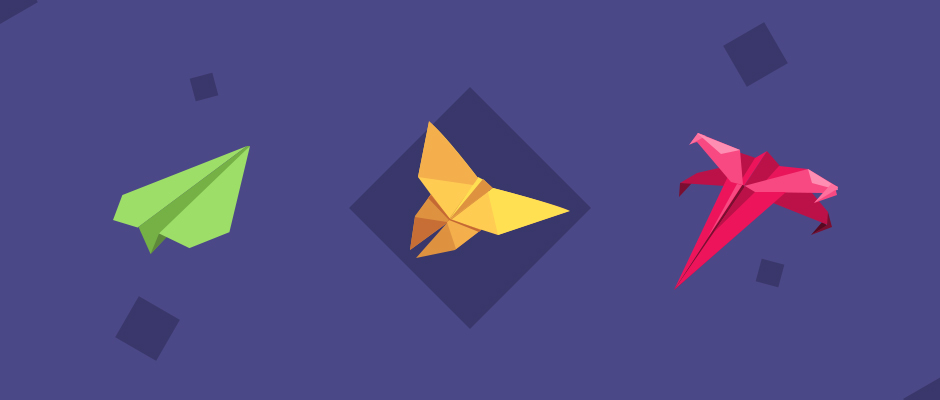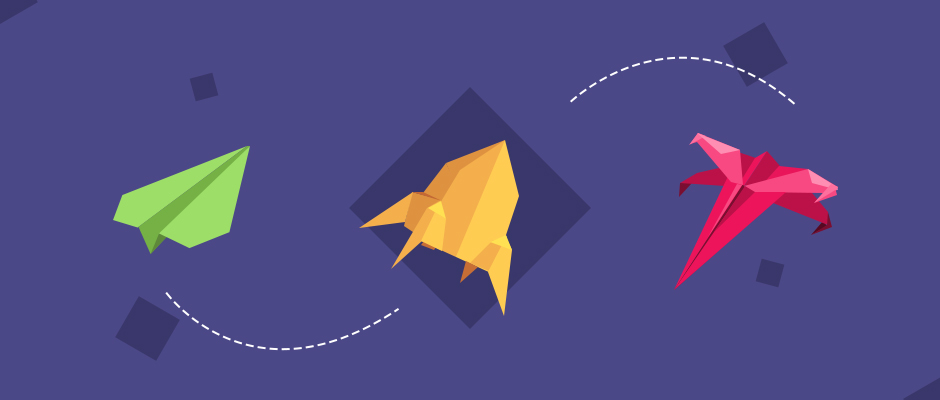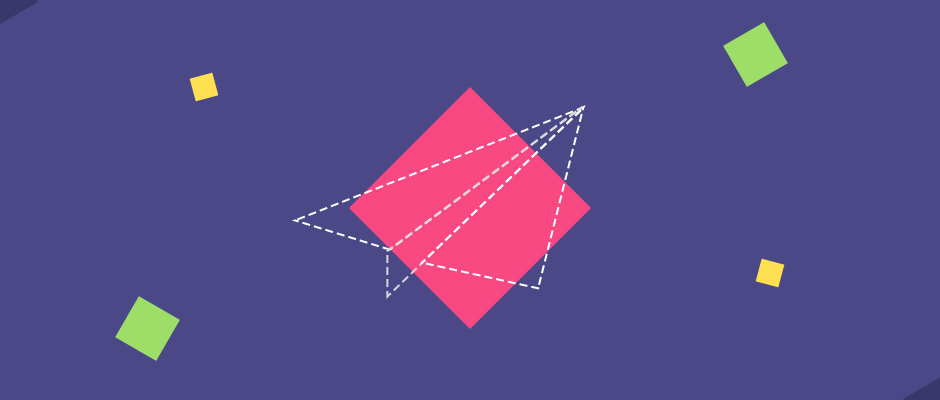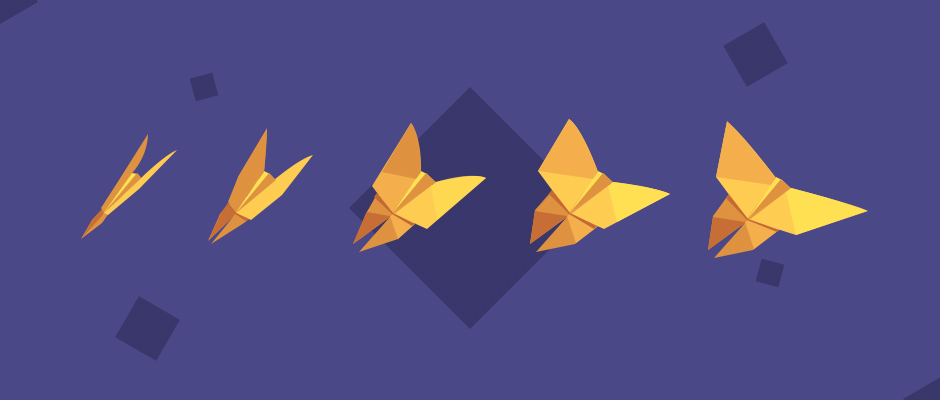Subtleties in the process of design for startups
This article went out of my way of “trial and error”, and almost every thesis is somehow connected with failure or success at the design and design stage for any startup.

I hope that it will help designers to avoid the same mistakes that I encountered in my time. For people who decide to make their startup, this article will help to take into account the subtleties associated with the development process and make a better product.
I will speak exclusively about the process of design, design and layout. But you should not take these stages as successive actions: we are not in a factory. Ideally everything happens only in books, so you need to get used to the fact that if something does not go the way you imagined, do not despair and panic.
')
The most important thing that can only be imagined is not always taken into account.

A client comes to the designer with prototypes developed by some designer, whose name is not called. There are no contacts with the designer, since he “closed” his part of the work and went on vacation / moved on to the next order. The design is accepted, given to the layout. Communication is over. There is also no contact with the coder, whose name is not called, as the designer formally “closed” his part of the work.
It's not even that very often the order “Plan-Do-Check-Act” stages are not observed, read “Design (in a general sense, together with design) - Layout - Design control - Polishing and start-up,” but that the structures included in these stages do not even communicate.
We are not robots, and one transfer of information through a manager or a client, if he acts as such, you will not manage. Communication from the very beginning of the project between all its structures is necessary (at least in our “common cause” of the front-end). Direct communication speeds up the communication and solution of project tasks, and the quality of the project is higher, since all of its participants can invest their professional experience at other stages. The main thing is not to overdo it.
It happens that at the design stage, the coder makes up an animation for what is drawn, which gives +100 to the wow effect for users and +200 to the feeling of ease of use.
In this communication, it is necessary to remember what stage it is and what, for example, it is not necessary to begin to impose at the stage of paper prototypes.
Development never ends, and the first deadline is just the beginning.

The designer completed his work, checked the layout and launched the site. Everything would seem fine. Two days later, you need to draw an icon. After a week of the site, it becomes clear that you need to redraw one of the blocks. After two weeks you need to design a new section. In a month you need a landing page. The designer, who was originally engaged in the site, is suddenly busy. What to do and where to run?
We must accept the fact that the development - the concept is almost eternal. You can call it “support” - and somehow, - but in the case of services, this is rather a full-fledged development. Although I adhere to the point of view that there are no ordinary sites. Perhaps, I was bitten by startups, and that's why I think so.
Designers can be divided into two types: short-term and long-term. And there is no question of who is better: they just have completely different functions. One is creating and doing it the best of all, and the other developing, and again, doing it the best. If you offer a short-term designer a long-term relationship, he will quickly “wither”. But if you give him a “clean sheet”, you will see magic. Similarly with “long-term”. If you work with a team or a firm that develops startups, they can assume the function of both creation and development.
If you are a designer and are not ready to join the team forever, consider options for deviation from the project and immediately discuss it with the client. If you do not provide development services, at the beginning of the project, start preparing yourself a very good replacement. Otherwise, then big problems will begin. Inaction can greatly spoil the relationship with the client, even with a great result.
Virtually every startup has several key milestones. Do not forget about this in business plans, on brainstorms and meetings with potential investors, and when it comes to design, everything starts to go awry.

At the programming stage, it suddenly turns out that there will not be four of the six sections, the user profiles will also wait, and in general the interaction mechanics “slightly” change, because now they are not yet ready to give so much content or have not yet agreed with the partners. And there are several functions that are not available, which are a red line across all pages.
As a result, as you understand, this is reflected absolutely on everything, and first of all, on quality. Everything starts to change, somewhere something “goes” and it turns out badly. And in order to succeed, you need, in fact, to do everything almost anew. Either start with full functionality over time.
If a client or designer sends you prototypes of only one milestone of a project with the task of implementing it alone, a reasonable package of questions should arise about the development of the project. Either a startup has one development milestone (does it happen at all?), Or you are asked to implement only the most minimal version, or customers have a wrong idea about development. By the way, clients are completely not obliged to understand the stages of service development and to know that for different milestones of development completely different design and design are needed. It is necessary to eliminate the misunderstanding at the very beginning of the project. It may be that at the design stage, where the designer was not present (see the paragraph about the phased development), a catastrophe occurred. This catastrophe is that there was an initial misunderstanding of the milestones of the project and that it was necessary to ask the right questions. If a disaster nevertheless occurred, regardless of the development stage, ask these correct questions before it is too late. Perhaps you can still finish or redo.
In the case of startups, you need to understand that you are selling several products at the same time, and at the same time the same one. And right at the beginning it, most often, the project with the trimmed-down functionality. In this case, the following “enhanced and extended” versions really need to know and understand where to grow.

The client verbally tells about the project and says that it is urgent. Inspired by the designer puts on a superhero costume, laid out in full, sends the layout. The client is disappointed, because this is absolutely not what he imagined. The designer is upset because he laid out, and he was told that he was wrong. Motivation to work together less and less.
First, if we touch upon the theme of the problem statement by the designer, one way or another, we will have to face biological and psychological things: left-handed / right-handed / ambidexter and audial / visual / kinesthetic. For each person all individually. As for me, I can’t stand the phone calls at all, as I developed a persistent habit of "flew into one ear, flew into the other." You have to ask permission to record voice in skype, and later listen and decipher. Or immediately sketched and recorded. Think, then talk and do. The most ideal formulation of the problem in an urgent situation in the absence of prototypes: at least a handwritten idea of what will be (by the designer or manager) with the deadline set. Or text. Either the text and the picture (at least scan).
Secondly, it’s very cool that startups themselves can learn how to make prototypes. Very cool that you can bring the idea “to the masses” (and developers as well) in words. But the best thing you can do for a project is to hire a good designer separately for this task. He will help to look at the project in a new way, and the work of the designer in conjunction with this designer will give the best result.
If the designer has no prototypes, he will do them himself, and nothing can stop it. As you understand, it will take much more time than working with ready-made prototypes.
As a rule, client prototypes, which are intended to tell about his presentation, are redone together with the designer and / or designer (if he understands something in design).
Between the coder and the designer should be more than constant communication. There must be great trust between them, because the result is the most beautiful and comfortable.

1. A very beautiful graphics is taken, and the output is a complete discrepancy to what was in the designer's layout. It seems to be laid out on the layout, but it turned out terribly. And, alas, familiar to every designer.
2. Pretty boring graphics. The coder makes her the best project in the world. And the animation in the theme, and everything is made up just fine. Familiar? Lucky you!
Layout designers are not very fond of when designers begin to climb into the layout as well as designers are unhappy when their layouts are interpreted very loosely in the final. And, nevertheless, the question: who should invent and think over such details as animation?
Artyom Polikarpov had an excellent report about the fact that layout designers are also designers.
Formally, nobody will require layout designers to come up with some interesting visual solution, but a good layout designer is able to greatly improve the design. So much so that it's hard to guess.
The designer, as a minimum, must understand what can and cannot be done. If the designer understands how to make, for example, animation, what restrictions and applications exist, it is difficult to implement or simply - this is great. Even better, if he can draw and explain what animation to do and make sure that the output corresponds to the idea. It's great if he can help realize this animation at the stage of layout.
In the case of a close bunch of designer and coder, help each other and good relations, the project will be very beautiful and you can expect a wow effect in the end.
1. Do not be afraid to participate at any stage of the development of ideas, strengths and questions.
2. Remember that launching a project is only the beginning of a journey. It is followed by refinement, processing and development: something is always needed. Talk about this with the client and decide who will develop the project.
3. Ask the right questions, provide for the implementation of different milestones of the project, even if it is not provided for you.
4. Know that the same understanding of the project and the movement of the whole team in one direction is the key to success. Prototype.
5. Make friends with the team and be in constant contact with the specialists who determine the quality of the implementation of your work stage.

I hope that it will help designers to avoid the same mistakes that I encountered in my time. For people who decide to make their startup, this article will help to take into account the subtleties associated with the development process and make a better product.
I will speak exclusively about the process of design, design and layout. But you should not take these stages as successive actions: we are not in a factory. Ideally everything happens only in books, so you need to get used to the fact that if something does not go the way you imagined, do not despair and panic.
')
Phasing does not mean lack of communication
The most important thing that can only be imagined is not always taken into account.

Situation
A client comes to the designer with prototypes developed by some designer, whose name is not called. There are no contacts with the designer, since he “closed” his part of the work and went on vacation / moved on to the next order. The design is accepted, given to the layout. Communication is over. There is also no contact with the coder, whose name is not called, as the designer formally “closed” his part of the work.
It's not even that very often the order “Plan-Do-Check-Act” stages are not observed, read “Design (in a general sense, together with design) - Layout - Design control - Polishing and start-up,” but that the structures included in these stages do not even communicate.
We are not robots, and one transfer of information through a manager or a client, if he acts as such, you will not manage. Communication from the very beginning of the project between all its structures is necessary (at least in our “common cause” of the front-end). Direct communication speeds up the communication and solution of project tasks, and the quality of the project is higher, since all of its participants can invest their professional experience at other stages. The main thing is not to overdo it.
It happens that at the design stage, the coder makes up an animation for what is drawn, which gives +100 to the wow effect for users and +200 to the feeling of ease of use.
In this communication, it is necessary to remember what stage it is and what, for example, it is not necessary to begin to impose at the stage of paper prototypes.
Get ready for eternal development
Development never ends, and the first deadline is just the beginning.

Situation
The designer completed his work, checked the layout and launched the site. Everything would seem fine. Two days later, you need to draw an icon. After a week of the site, it becomes clear that you need to redraw one of the blocks. After two weeks you need to design a new section. In a month you need a landing page. The designer, who was originally engaged in the site, is suddenly busy. What to do and where to run?
We must accept the fact that the development - the concept is almost eternal. You can call it “support” - and somehow, - but in the case of services, this is rather a full-fledged development. Although I adhere to the point of view that there are no ordinary sites. Perhaps, I was bitten by startups, and that's why I think so.
Designers can be divided into two types: short-term and long-term. And there is no question of who is better: they just have completely different functions. One is creating and doing it the best of all, and the other developing, and again, doing it the best. If you offer a short-term designer a long-term relationship, he will quickly “wither”. But if you give him a “clean sheet”, you will see magic. Similarly with “long-term”. If you work with a team or a firm that develops startups, they can assume the function of both creation and development.
If you are a designer and are not ready to join the team forever, consider options for deviation from the project and immediately discuss it with the client. If you do not provide development services, at the beginning of the project, start preparing yourself a very good replacement. Otherwise, then big problems will begin. Inaction can greatly spoil the relationship with the client, even with a great result.
Several options for the future
Virtually every startup has several key milestones. Do not forget about this in business plans, on brainstorms and meetings with potential investors, and when it comes to design, everything starts to go awry.

Situation
At the programming stage, it suddenly turns out that there will not be four of the six sections, the user profiles will also wait, and in general the interaction mechanics “slightly” change, because now they are not yet ready to give so much content or have not yet agreed with the partners. And there are several functions that are not available, which are a red line across all pages.
As a result, as you understand, this is reflected absolutely on everything, and first of all, on quality. Everything starts to change, somewhere something “goes” and it turns out badly. And in order to succeed, you need, in fact, to do everything almost anew. Either start with full functionality over time.
If a client or designer sends you prototypes of only one milestone of a project with the task of implementing it alone, a reasonable package of questions should arise about the development of the project. Either a startup has one development milestone (does it happen at all?), Or you are asked to implement only the most minimal version, or customers have a wrong idea about development. By the way, clients are completely not obliged to understand the stages of service development and to know that for different milestones of development completely different design and design are needed. It is necessary to eliminate the misunderstanding at the very beginning of the project. It may be that at the design stage, where the designer was not present (see the paragraph about the phased development), a catastrophe occurred. This catastrophe is that there was an initial misunderstanding of the milestones of the project and that it was necessary to ask the right questions. If a disaster nevertheless occurred, regardless of the development stage, ask these correct questions before it is too late. Perhaps you can still finish or redo.
In the case of startups, you need to understand that you are selling several products at the same time, and at the same time the same one. And right at the beginning it, most often, the project with the trimmed-down functionality. In this case, the following “enhanced and extended” versions really need to know and understand where to grow.
Better bad prototype than no

Situation
The client verbally tells about the project and says that it is urgent. Inspired by the designer puts on a superhero costume, laid out in full, sends the layout. The client is disappointed, because this is absolutely not what he imagined. The designer is upset because he laid out, and he was told that he was wrong. Motivation to work together less and less.
First, if we touch upon the theme of the problem statement by the designer, one way or another, we will have to face biological and psychological things: left-handed / right-handed / ambidexter and audial / visual / kinesthetic. For each person all individually. As for me, I can’t stand the phone calls at all, as I developed a persistent habit of "flew into one ear, flew into the other." You have to ask permission to record voice in skype, and later listen and decipher. Or immediately sketched and recorded. Think, then talk and do. The most ideal formulation of the problem in an urgent situation in the absence of prototypes: at least a handwritten idea of what will be (by the designer or manager) with the deadline set. Or text. Either the text and the picture (at least scan).
Secondly, it’s very cool that startups themselves can learn how to make prototypes. Very cool that you can bring the idea “to the masses” (and developers as well) in words. But the best thing you can do for a project is to hire a good designer separately for this task. He will help to look at the project in a new way, and the work of the designer in conjunction with this designer will give the best result.
If the designer has no prototypes, he will do them himself, and nothing can stop it. As you understand, it will take much more time than working with ready-made prototypes.
As a rule, client prototypes, which are intended to tell about his presentation, are redone together with the designer and / or designer (if he understands something in design).
Design + layout =?
Between the coder and the designer should be more than constant communication. There must be great trust between them, because the result is the most beautiful and comfortable.

Two situations
1. A very beautiful graphics is taken, and the output is a complete discrepancy to what was in the designer's layout. It seems to be laid out on the layout, but it turned out terribly. And, alas, familiar to every designer.
2. Pretty boring graphics. The coder makes her the best project in the world. And the animation in the theme, and everything is made up just fine. Familiar? Lucky you!
Layout designers are not very fond of when designers begin to climb into the layout as well as designers are unhappy when their layouts are interpreted very loosely in the final. And, nevertheless, the question: who should invent and think over such details as animation?
Artyom Polikarpov had an excellent report about the fact that layout designers are also designers.
Formally, nobody will require layout designers to come up with some interesting visual solution, but a good layout designer is able to greatly improve the design. So much so that it's hard to guess.
The designer, as a minimum, must understand what can and cannot be done. If the designer understands how to make, for example, animation, what restrictions and applications exist, it is difficult to implement or simply - this is great. Even better, if he can draw and explain what animation to do and make sure that the output corresponds to the idea. It's great if he can help realize this animation at the stage of layout.
In the case of a close bunch of designer and coder, help each other and good relations, the project will be very beautiful and you can expect a wow effect in the end.
findings
1. Do not be afraid to participate at any stage of the development of ideas, strengths and questions.
2. Remember that launching a project is only the beginning of a journey. It is followed by refinement, processing and development: something is always needed. Talk about this with the client and decide who will develop the project.
3. Ask the right questions, provide for the implementation of different milestones of the project, even if it is not provided for you.
4. Know that the same understanding of the project and the movement of the whole team in one direction is the key to success. Prototype.
5. Make friends with the team and be in constant contact with the specialists who determine the quality of the implementation of your work stage.
Source: https://habr.com/ru/post/196936/
All Articles